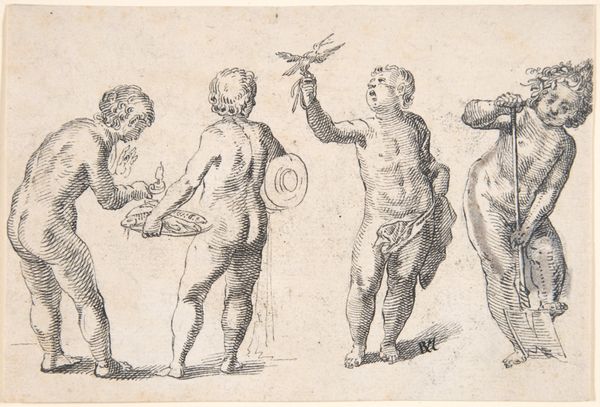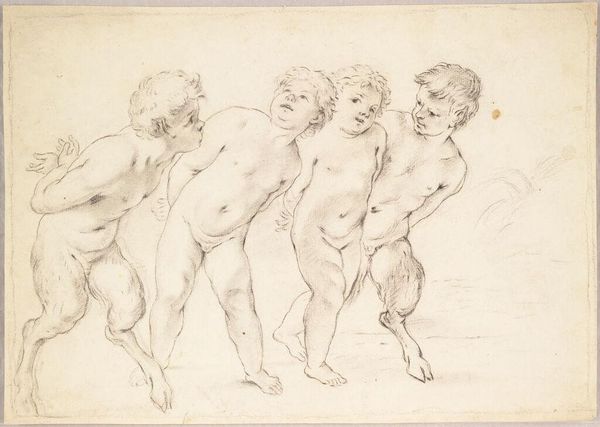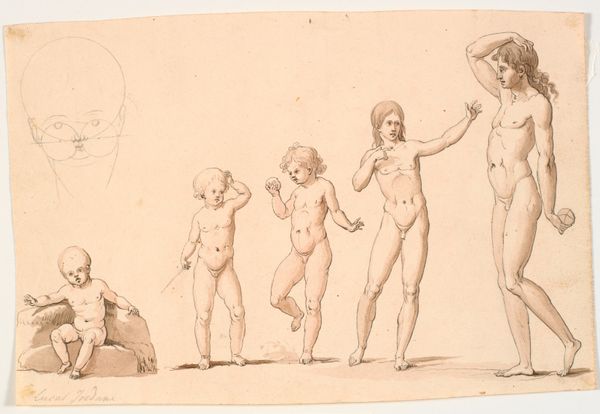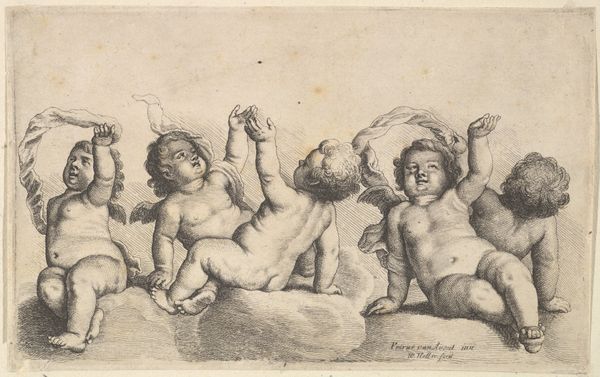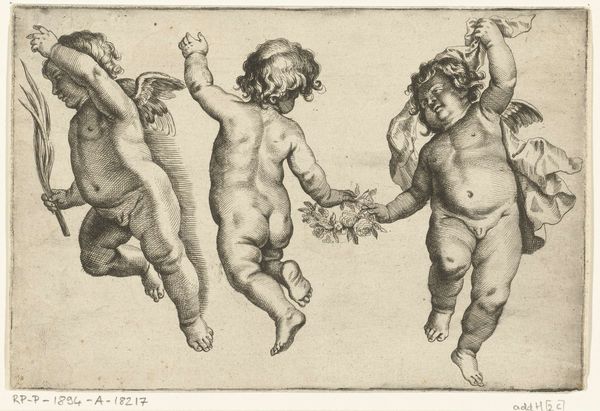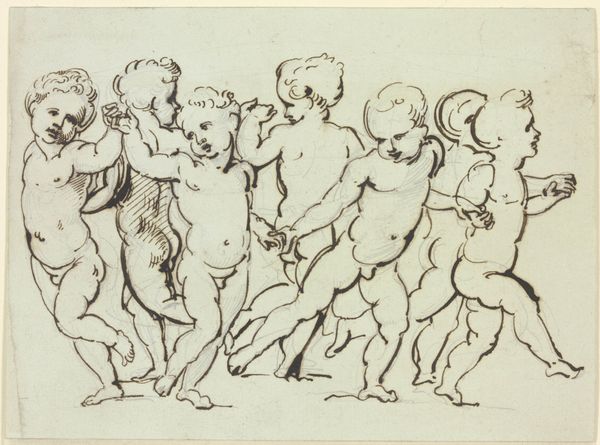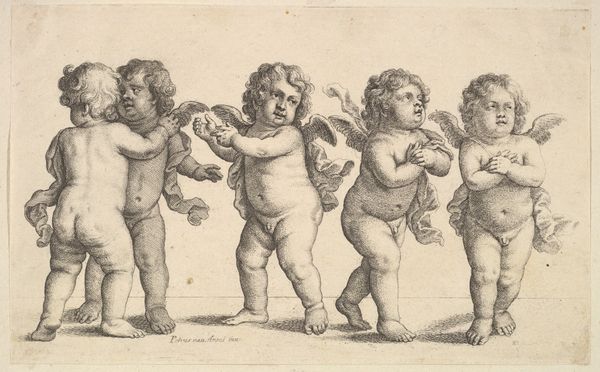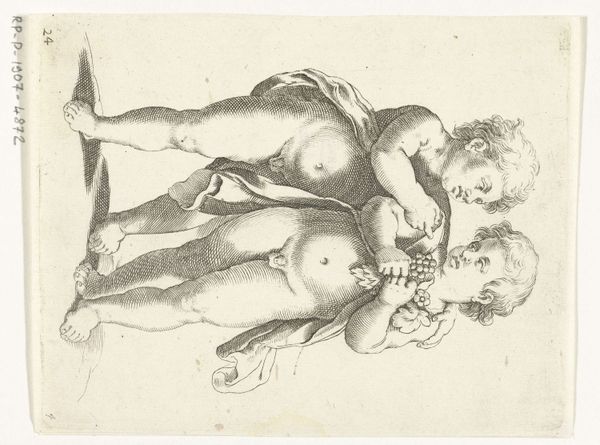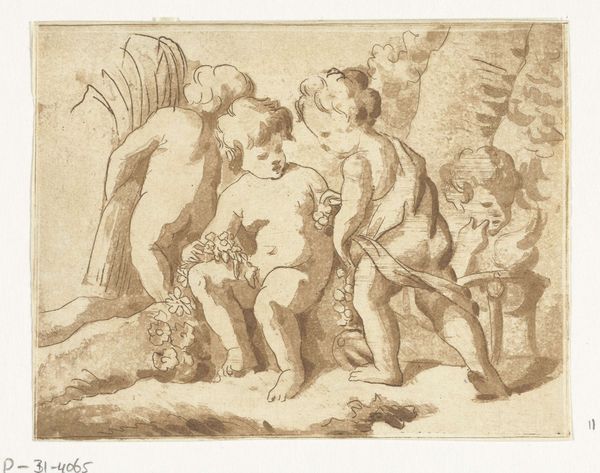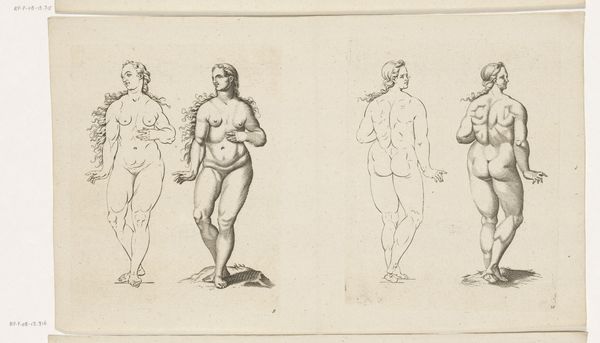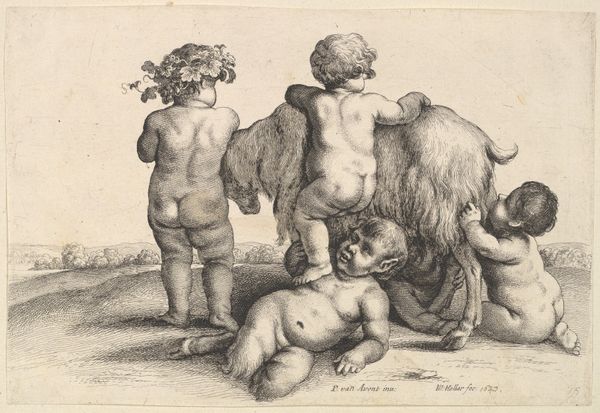
drawing, print, ink, engraving
#
drawing
#
baroque
# print
#
figuration
#
ink
#
nude
#
engraving
Dimensions: height 160 mm, width 125 mm, height 155 mm, width 120 mm, height 184 mm, width 310 mm
Copyright: Rijks Museum: Open Domain
Editor: This is "Putti," an ink engraving, etching and print by an anonymous artist, dating from somewhere between 1671 and 1726. The figures are quite muscular for children; it's kind of unnerving. What do you see in this piece? Curator: Beyond the immediate strangeness, consider the Baroque period. How do societal ideals about childhood intersect with, and perhaps get challenged by, representations of idealized, often eroticized, forms? The putti are, on one hand, religious symbols. But what about their almost aggressive physicality? Editor: So, it's about the tension between religious symbolism and almost…hyper-real, carnal depiction? Curator: Exactly. Think about it: During the Baroque era, concepts of childhood were shifting. There's this growing awareness of the child as an individual, yet also immense societal pressure to mold children. These muscular putti, nude no less, aren't just cherubs; they're embodiments of power, desire. How does that influence our interpretation of innocence? Editor: It challenges the typical, sentimental view. The muscularity introduces this element of...capability, or even dominance. It also pushes the boundaries of innocence versus something more knowing, or sensual. Curator: Precisely. We see these visual cues – the robust bodies, the ambiguous gazes, and their interactions – creating a discourse on innocence, power, and perhaps even early sexuality, that subverts, but also reinforces existing, cultural ideas of identity formation in the period. Do you find it compelling in that regard? Editor: It definitely makes me rethink how easily we define concepts like 'innocence' when we look at historical art. The power dynamic makes the piece provocative. I hadn't thought about it that deeply. Curator: Which shows the dynamism of viewing art, always something new to discover. Editor: Absolutely! It has been so thought-provoking, offering a fresh way of understanding the era.
Comments
No comments
Be the first to comment and join the conversation on the ultimate creative platform.

